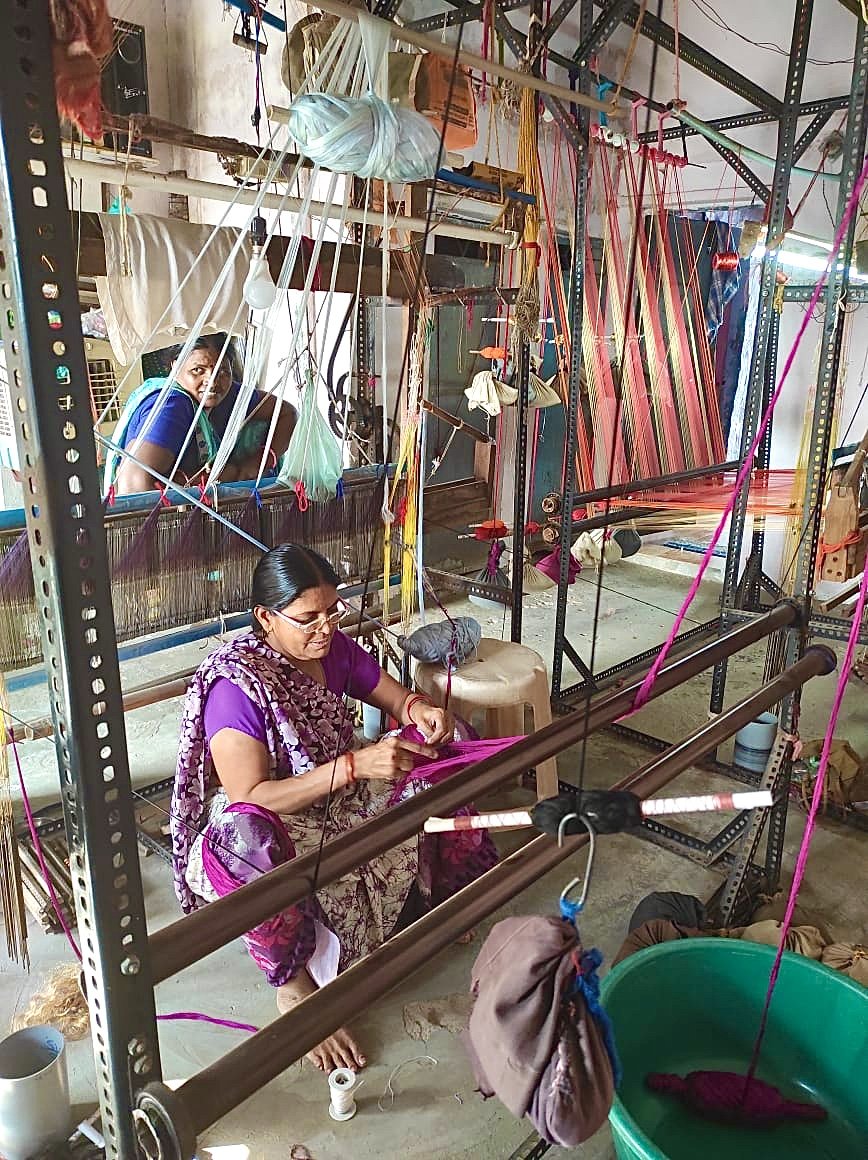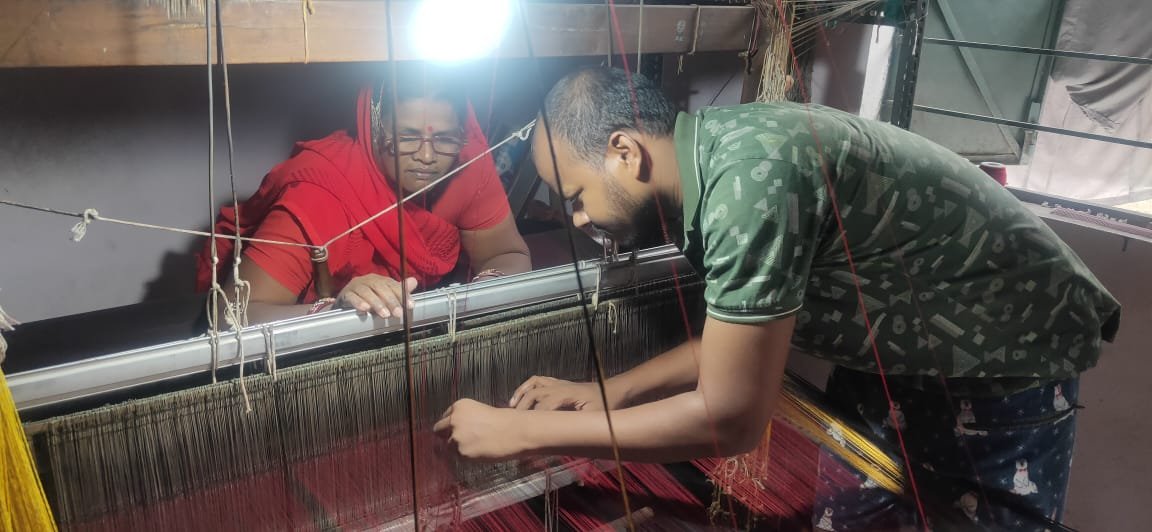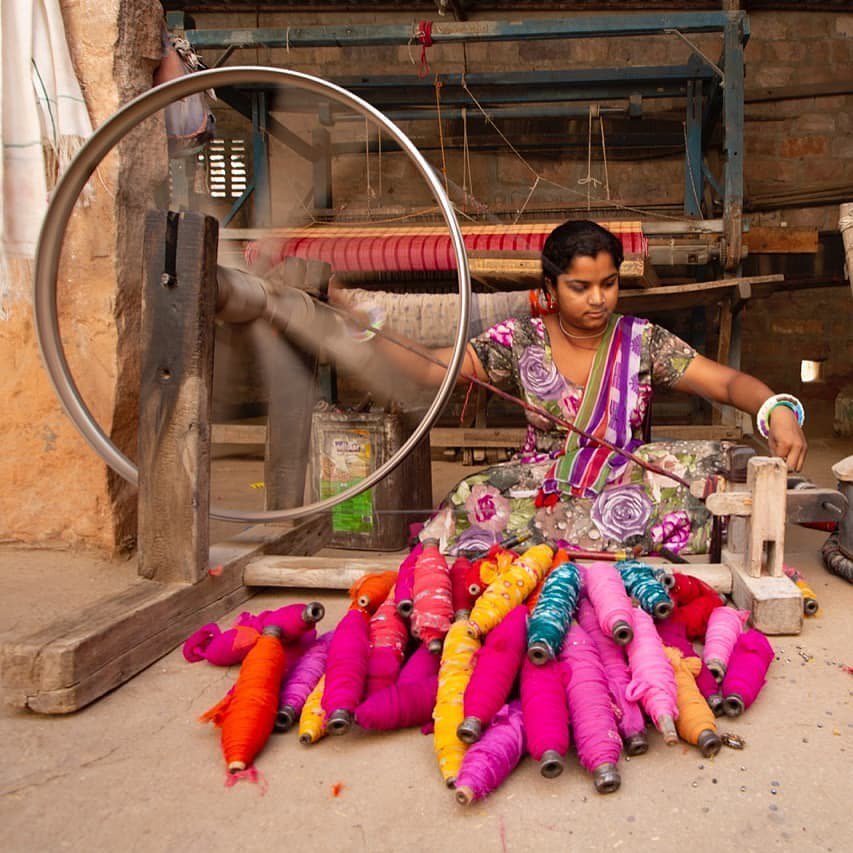Sustainable Baddie of the Week: Redesigning the Artisan Economy with Radhika Gupta
Fashion as a modality is not only wearable art; it preserves memories and cultural traditions and shapes our collective futures. Our clothes are inherently artifacts that capture our present moment. If made well, they may transform with the wearer across decades, perhaps centuries. When we consider clothing in this light, we simultaneously uncover and assign meaning to each layer of the creation process: ideation, design, the weaving of the textiles, and finally the tailoring of the garment.
For artisans across the globe, this process encapsulates their legacy and the legacy of their communities. Global capitalism has obscured and diminished these legacies in pursuit of transient profit, a reality Sustainable Baddie and our peers in fashion activism are striving to change. Garment labor is a human rights issue; globally, over 75% of artisans and garment workers are women. Social entrepreneur Radhika Gupta is an outspoken advocate for South Asian artisans. We spoke with her about the artisan economy’s influence on modern Indian fashion and shifting the narrative that views artisans as laborers to honoring them as true artists and craftspeople.
In the past two decades, we’ve seen societies across the Global South begin to rebound from their colonial past and redefine their identities. South Asia in particular has seen a blending of heritage clothing with western styles. In India, this has looked like the emergence of a middle class with the resources and desire to express themselves by cultivating a personal style. Gupta came of age as Indian society began to make this transition. She grew up with a fascination for handloom (also known as hand-woven) textiles. As a college student studying business and economics, she was exposed to the polarity that existed within the world of fashion. While interning with a leading fashion magazine in the mid-aughts, she saw the luxury segment of the Indian fashion industry from the inside. At the same time, she traveled to remote areas in India and observed artisan clusters as they created garments in their signature methods, perfected over generations. From natural dyeing and block printing in Rajasthan to the intricate embroidery done in Gujarat in India’s northwest, Gupta developed an intimate appreciation for the subcontinent’s rich, diverse artistic talent that would shape the trajectory of her career.
Time took Gupta across borders and oceans to study fashion marketing at the prestigious Parson’s School of Design and the University of the Arts in London (UAL). Newly equipped with technical know-how and enriched by the wisdom of her peers from all over the world, she returned to India amidst the Great Recession. Taking up work as a merchandiser working for export houses and later for luxury fashion houses, she interfaced directly with the garment production process and she saw firsthand the plight of garment workers.
“I think subconsciously I realized that this industry, the fashion industry, has sort of two parts to it,” she reflects. “One is outwardly beautiful, glamorous, exciting, and then there is the back end of it where things are getting made.”
This duality stayed with her as she moved through different sectors, getting exposure to philanthropy and non-profit work before charting a path for the new artisan economy.
Gupta’s first foray into entrepreneurship was with her pioneering venture Black Taxi. At a time when the Indian consumer base was growing, there was an opening in the market to connect these consumers with slower, homegrown brands, and handloom pieces. “We sort of became the pioneers of the word ‘pop-up’ in India.” The exhibition model was an ideal platform to feature small entrepreneurs creating heritage pieces of clothing, made entirely by hand using traditional methods. Gupta found that one-of-a-kind pieces coupled with a transparent pricing model enticed consumers away from normative shopping experiences, which, at the time, were mostly in large, regional department stores. “We [were] building this community of young brands that are so sort of hyper-local-focused on creating employment, creating access to local textiles, to local crafts, to local artisans,” Gupta emphasized, “creating stories and narratives that are so true to India.”
Gupta’s relationship with the people at the center of her work became her primary focus. Through Black Taxi, she supplemented the designers with expert marketing and distribution opportunities. A community of designers and their artisan suppliers as well as a consumer base of homegrown fashion enthusiasts began to grow. Guided by her philanthropic experience, she started searching for more ways to support artisans and address their economic conditions.
As life brought along a move to the U.S. once again, Gupta began nurturing her next venture.
“I had gotten extremely, extremely involved with two small social enterprises that were working specifically with women artisans in the livelihood space.” As the world became engulfed by a global pandemic, artisans began to lose their sales. Global supply chain interruptions meant that the greater industry was collapsing, leaving already vulnerable garment workers in dire states. This is when Gupta began to deepen her connections with these artisan clusters and find ways to teach craftspeople how to market their products using technology accessible to even the most remote parts of India. Industry experts from Gupta’s network joined in her efforts to teach artisans the many facets of self-employment, from marketing on social media to financial management. That’s how Raaha, a social enterprise, was born.
At Raaha, providing support for the artisans while also turning a profit became a challenge. Gupta was resolute that the products weren’t simply sold, but that the artisans received credit for their craft. Even prior to the pandemic, artisans around the world were at the mercy of middlemen to connect their products to consumer markets. (We discuss the prevalence of this issue in our previous feature on Chila Bags, to the point that women artisans are exploited in artisan pockets globally.)
One of Gupta’s goals was to redefine the middleman as a supportive figure, rather than a menacing one. “Look, the reality of it is that artisans live in extremely inaccessible environments.” Gupta points out, “So unless there are middlemen, you actually cannot work with a lot of artisan clusters.”
But Gupta maintains that her goals for Raaha were to create “1. Awareness around Indian crafts and Indian handmade products, whether it's textiles or beyond that, and 2. …access to direct consumers for artisans, where the artisans are now able to actually have a conversation with the consumer.”
As a social enterprise, Raaha explored sales opportunities ranging from creating luxury gift packages to having the artisans themselves teach virtual workshops to corporate teams. While many of these stream revenues were successful in creating strong sales opportunities for artisans, the inherently slow nature of artisan crafts was often incompatible with the pace and rate of demand for products. Slow fashion was once again at odds with the normalized high volume of modern consumption. Reconciling the challenges posed by global conditions with creating a sustainable artisan economy required an approach unencumbered by a need for profitability. Raaha partnered with Ka-sha, an Indian craft-centric label, to create a non-profit offshoot dubbed The Artisan Shop. Without the need to turn a profit, artisans could set their own prices and communicate directly with consumers. Gupta and her team would provide business resources and know-how, but artisans could decide how to fairly price their pieces based on the revenue needed to support their community.
Ultimately, modern design would not exist without preserved crafting techniques. “The image of artisans that has been projected, especially in the West, is that they are workers. They are labor. Which is actually very condescending to their skill set.” Artisans generated and perfected the textiles and techniques you’ve seen in mainstream fashion, which most designers get inspiration from. Block-printed textiles and paisley embroidery barely scratch the surface of what the artisan economy has contributed to the lexicon. Regarding her fashion and consumption philosophy, Gupta notes “Maybe I enjoy [a piece] because I understand the labor that's gone behind it. Maybe I understand the labor that's going behind it because I've always enjoyed how [my pieces] look and feel.” If Gupta could have you leave this piece with one takeaway, it would be that artisans are artists, and they deserve to be revered in the same way we revere someone like Elsa Schiaparelli.
“The craft community in India has, for generations, been the custodians of a craft that…only they know how to create. So if there is a true creator, it is artisans.”
Of course, we at Sustainable Baddie are here to uplift creators of color and condemn whitewashing wherever it happens, but whitewashing wears many hats. So when you, dear baddie, are shopping, think about the blood, sweat, passion, and precision that went into your favorite garment.
Gupta is constantly innovating ways to make sure we see the art in our clothes and in our communities, and we can’t wait to see where her journey takes her next.
Photo Credits: Ruhi Handloom, Maheshwar, Madhya Pradesh







